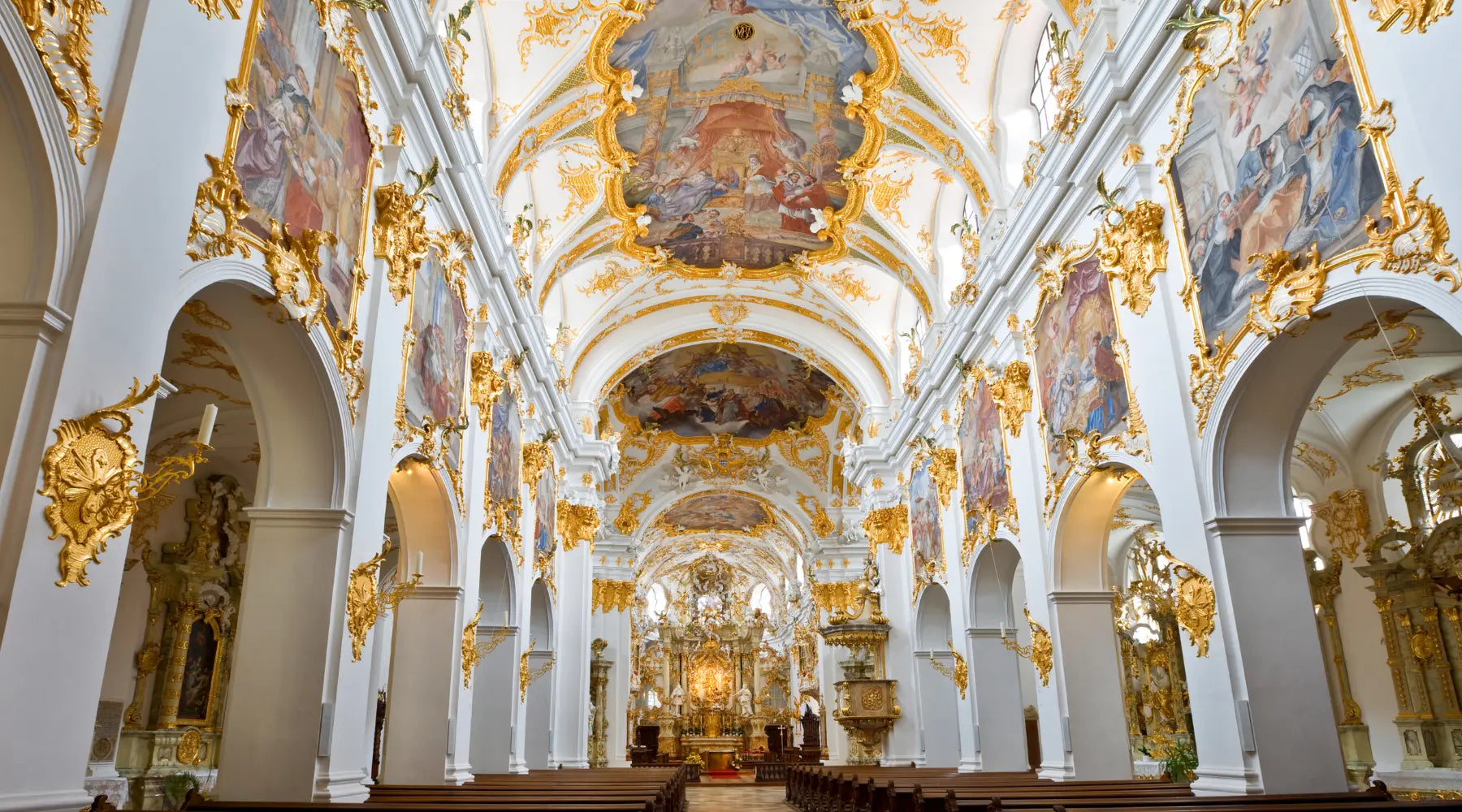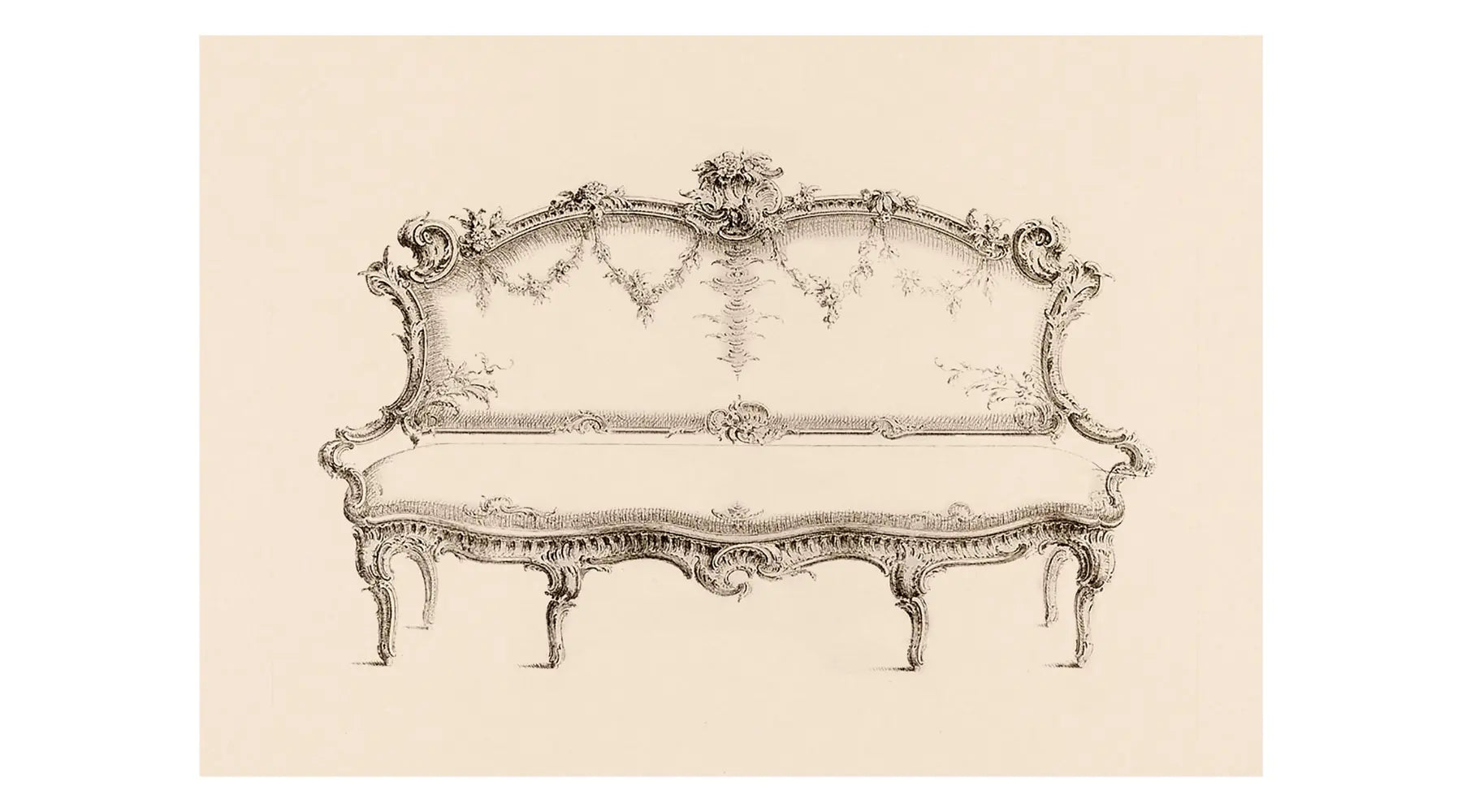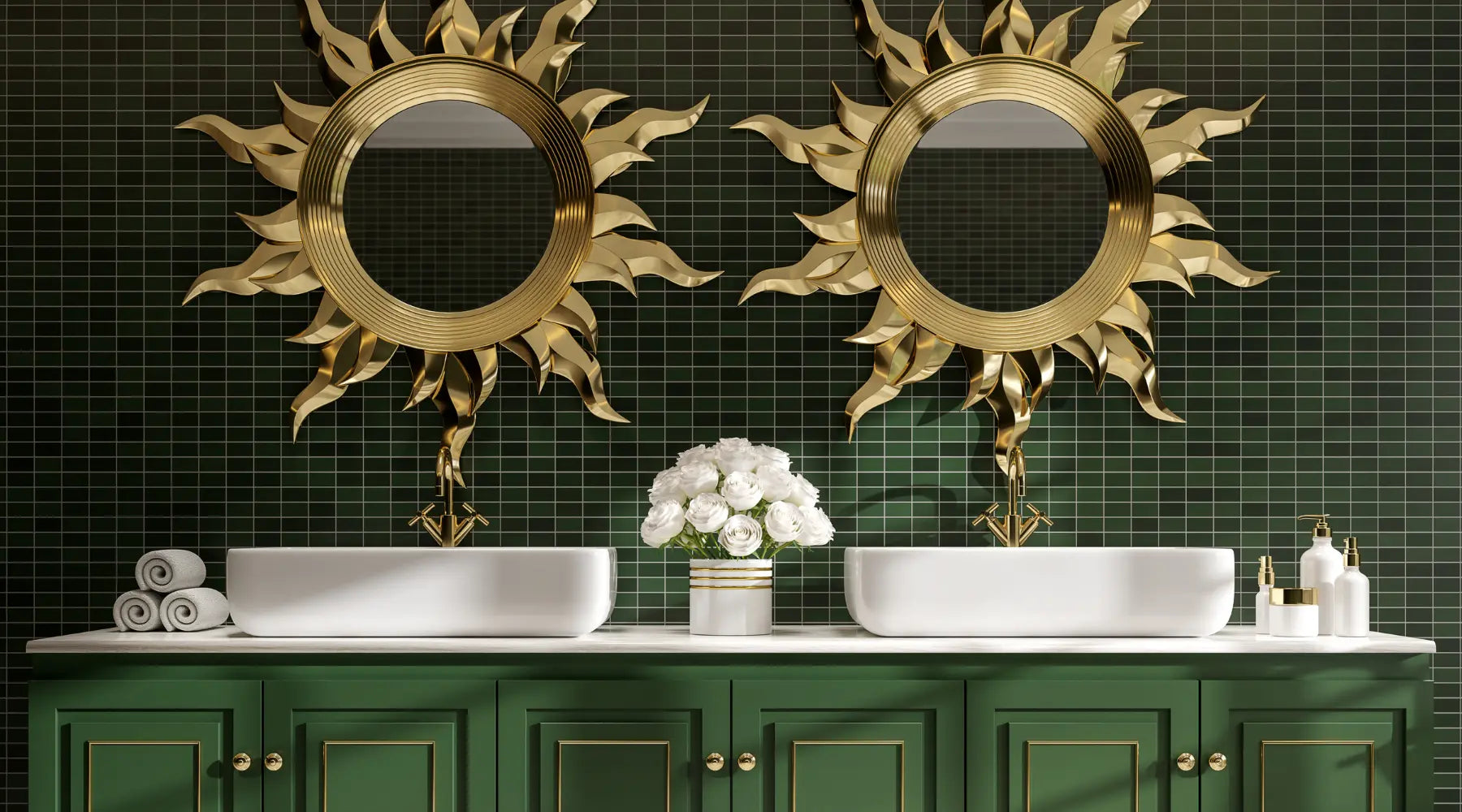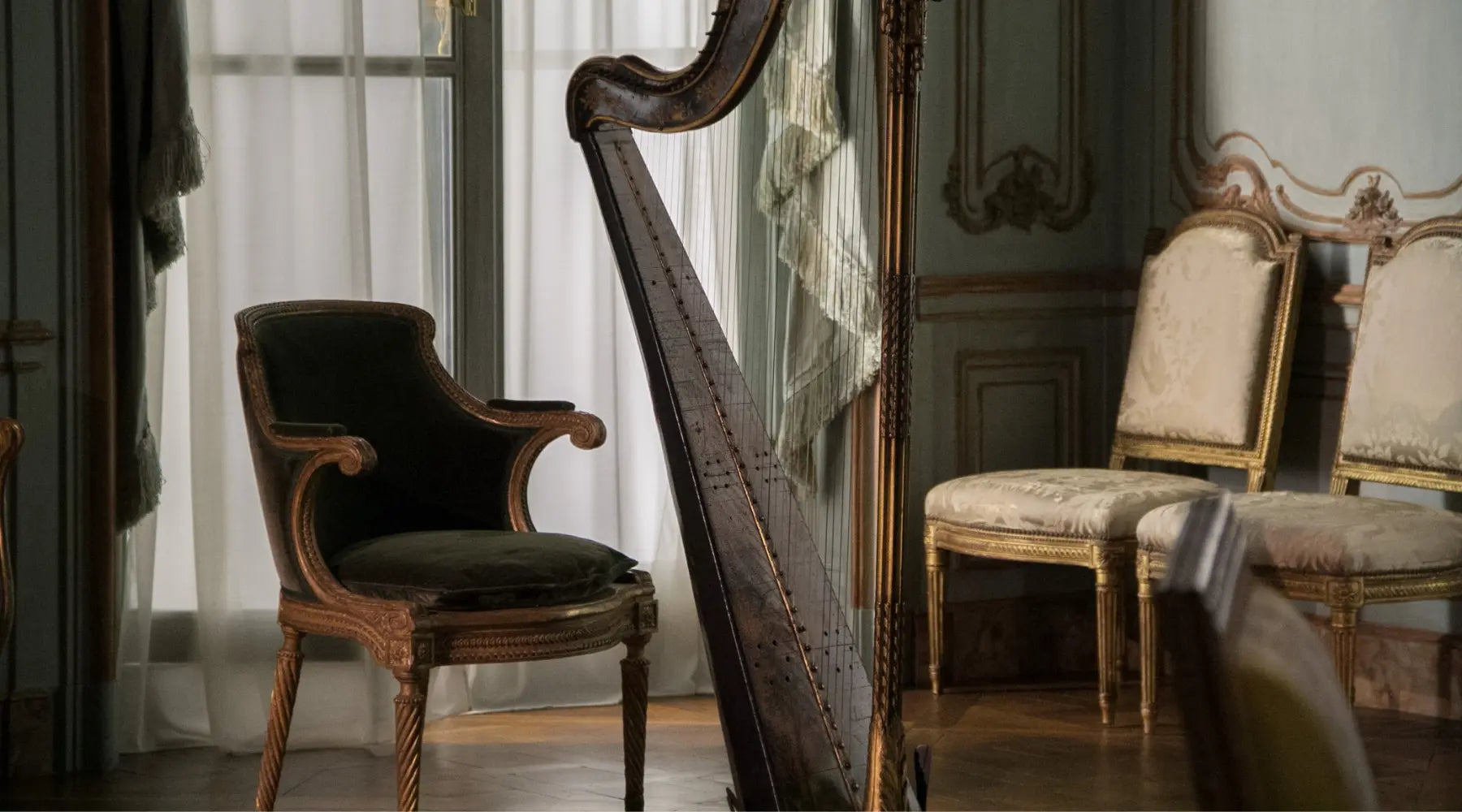Your Cart is Empty
Free shipping, 3-5 Business days for in-stock rugs!
Free shipping, 3-5 Business days for in-stock rugs!
Free shipping, 3-5 Business days for in-stock rugs!
September 28, 2022 10 min read
The rococo style is a type of art and architecture that emerged in the 18th century. It is characterized by its ornate, baroque elements, as well as its lighthearted and playful nature. This style was very popular during its time, and you can still see its influence in modern art and design. In this blog post, we will explore the origins of the rococo style, as well as some of its key characteristics!
Rococo is a French word that literally means "rocaille." Rocaille is a type of ornamental stone used in architecture and decorative arts. The word Rococo was first used in the 18th century to describe the style of decoration characterized by intricate patterns and curves.
It was a reaction to the formal and heavy style of the Baroque period. Rococo artists sought to create a lighter, more graceful style of art that reflected the spirit of the age.
Rococo quickly spread from France to other parts of Europe, where it became extremely popular with the aristocracy. The Rococo style reached its peak in the mid-18th century but began to decline in popularity in the late 18th century.
Today, Rococo is considered one of the most important and influential styles of art in history. It continues to inspire artists and designers all over the world.

French rococo is a highly ornate style of architecture, art, and interior design that emerged in France during the early 18th century. It is characterized by its use of light colors, intricate designs, and elaborate furniture. French rococo reached its peak in the 1740s but began to decline in popularity after the French Revolution in 1789. Today, it is admired for its elegance and sophistication.
French rococo was not simply a style of architecture or art; it was an expression of the zeitgeist, or spirit of the times. The Rococo period was one of luxury, leisure, and pleasure. The aristocratic class had more time and money to devote to pursuits such as music, theater, and dance. They also commissioned more art, which helped to spread the Rococo style throughout Europe.
During the Rococo period, Paris was the center of fashion and culture. The most famous Rococo artists were Jean-Honoré Fragonard and François Boucher. Their work epitomized the lightness, playfulness, and eroticism of the Rococo style.
French rococo has often been criticized for being too frivolous and superficial. However, it should be noted that the Rococo period was one of great political and social upheaval in France. In many ways, French rococo can be seen as a reaction against the austerity of preceding styles such as Baroque.
Despite its decline in popularity after the French Revolution, French rococo has left a lasting impression on the world of art and architecture. Its lightness, elegance, and sophistication continue to inspire artists and designers to this day.
Italian Rococo was a movement in art that began in the late 17th century and reached its height in the 18th century. The style is characterized by ornate, highly detailed designs with a light, airy feel. Rococo artists often used pastel colors and incorporated elements of nature into their work.
Rococo first emerged in France but quickly spread to other countries in Europe, including Italy. One of the most famous Italian Rococo artists was Giovanni Battista Tiepolo (1696-1770). Tiepolo's work exemplifies the characteristic lightness and playfulness of Rococo art. He often included scenes from classical mythology or biblical stories in his paintings, but treated them in a lighthearted way.
If you're interested in learning more about Italian Rococo, check out some of the resources below.
Resources:
-The Metropolitan Museum of Art: About Giovanni Battista Tiepolo
-Wikipedia: Italian Rococo
-Art Encyclopedia: Rococo Art movement
- Britannica: Rococo
Rococo is a style of art that emerged in the early 18th century. It is characterized by its ornate, often gaudy decoration and its focus on light and airy themes. German rococo artists took these characteristics to the extreme, creating works that were highly detailed and often excessive in their use of color and ornamentation.
German rococo reached its peak in the mid-18th century but began to decline in popularity after the mid-19th century. Today, German rococo is considered one of the most important movements in Western art history.
If you're interested in learning more about German rococo, there are several excellent resources available online. Here are a few of our favorites:
- The Metropolitan Museum of Art's Heilbrunn Timeline of Art History: Rococo
- The J. Paul Getty Museum: Rococo
- Britannica.com: Rococo
- Essential Vermeer: German Rococo Artists
These are just a few of the many excellent resources available on German rococo. With a little bit of exploration, you're sure to find even more! Thanks for reading! We hope you enjoy learning about this fascinating period in art history.
Please feel free to share this blog post with your friends and followers! And be sure to check back soon for more posts on all things art history. Cheers!

The word ‘rococo’ comes from the French word rocaille, meaning rocks or stone. Rococo was a style of art that emerged in France in the early 18th century and spread to other parts of Europe. It is characterized by its ornate, decorative style with an emphasis on nature and love.
Rococo was initially used to describe the ornate decoration of the interiors of French palaces and mansions. However, it soon came to be associated with a whole range of art forms including painting, sculpture, architecture, furniture, and even fashion. In England, Rococo is often referred to as English Rococo or Late Baroque.
One of the most famous examples of English Rococo architecture is the Royal Pavilion in Brighton. This seaside palace was built for George IV in the early 19th century and is a prime example of the opulent, over-the-top style that typifies Rococo.
If you’re interested in learning more about English Rococo, there are plenty of resources available online and in libraries. You can also visit some of the most famous examples of English Rococo architecture, like the Royal Pavilion in Brighton.
So, what is English rococo? In short, it is a highly ornate and decorative style of art that emerged in France during the early 18th century and spread to other parts of Europe – including England. Often referred to as Late Baroque, English Rococo is characterized by its opulent decoration and nature-themed designs. To get a better understanding of this fascinating style of art, be sure to check out some of the resources listed above. And if you’re ever in Brighton, don’t forget to swing by the Royal Pavilion!
The Rococo style originated in France in the early 18th century. It was a reaction to the more formal and sober styles that preceded it, such as the Baroque. The Rococo style is characterized by lightness, elegance, and ornamental details.
Today, the Rococo style is still influential in interior design. Many designers incorporate Rococo-inspired elements into their work, such as intricate plasterwork, gilding, and pastel colors.
While the Rococo style may not be as popular as it once was, its influence can still be seen in many modern interiors. If you're looking to add a touch of luxury to your home, consider incorporating some Rococo-inspired elements into your design.
If you enjoyed this post, please feel free to share it with your friends or family. Also, if you have any questions or comments, please leave them in the comments section below. I would love to hear from you!

Rococo furniture and decorative arts were characterized by their use of light colors, intricate designs, and a focus on comfort and luxury. Rococo furniture was often made from expensive materials such as marble or carved wood and was often decorated with gold or silver leaf. Rococo decorative arts included ornate mirrors, paintings, and sculptures.
Many modern designers have been inspired by the Rococo aesthetic, creating furniture and decor that is both beautiful and functional.
What are some of your favorite Rococo-inspired pieces? Share them with us in the comments below!
Do you have a piece of Rococo furniture or decor in your home? What do you think of the style? Let us know in the comments!

Rococo was a reaction to the ornate and formal style of the Baroque. Rococo artists sought to create more naturalistic art and often incorporated elements of nature into their work. They also favored lighter colors and softer forms, as opposed to the dramatic and grandiose style of the Baroque.
Rococo artists such as Antoine Watteau were known for their "fêtes galantes", or scenes of elegant people enjoying themselves in parks or gardens. These paintings were a far cry from the dark and serious religious paintings of the Baroque period.
Overall, Rococo was a more light-hearted style than its predecessor and aimed to please its viewers rather than provoke them. It was a style of art that was meant to be enjoyed, and its playful nature is one of its most defining characteristics.
Rococo architecture is often characterized by its use of ornate, decorative details. Rococo buildings are often quite elaborate, with highly decorated exteriors and interiors. They frequently feature asymmetrical designs, curved lines, and intricate details.
Rococo architecture first emerged in France in the early 18th century. It quickly spread to other parts of Europe, including Germany, Italy, and Russia. Rococo architects often borrowed elements from Baroque architecture, which was popular at the time. However, they added their unique touches to create a distinct style.
Today, Rococo architecture can be found all over the world. Many famous buildings, including some of the most iconic castles and palaces in Europe, were built in the Rococo style.
If you're interested in learning more about Rococo architecture, there are plenty of resources available online and in libraries. You can also take a trip to see some of the most famous Rococo buildings for yourself!
Some of the most iconic Rococo buildings include the Palace of Versailles, the Palazzo Barberini, and the Schönbrunn Palace. These buildings are characterized by their ornate designs and lavish decorations. The Rococo style was a significant departure from the more formal and classical styles that preceded it.
-The Palace of Versailles is perhaps the most famous Rococo building in the world. It was built for Louis XIV, the "Sun King", in the 17th century. The palace is renowned for its opulent chambers, grandiose gardens, and an extensive collection of artworks.
-The Palazzo Barberini is another iconic Rococo building. It was designed by Gian Lorenzo Bernini in the 17th century. The palazzo is characterized by its grand staircase, ornate ceilings, and dramatic sculptures.
-The Schönbrunn Palace is also a well-known Rococo building. It was the imperial summer residence of the Habsburg monarchy in Austria. The palace features an extensive park, beautiful gardens, and several impressive buildings.
These are just some of the most iconic Rococo buildings in the world. Each one is unique and has its fascinating history. If you ever have the opportunity to visit any of these places, you will not be disappointed!
Some other notable Rococo buildings include the Royal Palace of Madrid, which was built for King Charles III in the 18th century; The Hermitage in Saint Petersburg, Russia, which was the winter residence of the Russian tsars; and The Palace of Fontainebleau in France, which was built for King Louis XIV in the 17th century.
Rococo paintings are characterized by their soft pastel colors, delicate features, and lighthearted subject matter. They often depict scenes of love or leisure, and they frequently include elements of nature such as flowers or birds. Rococo artists sought to create an atmosphere of beauty and elegance, and their work is often playful and charming.
Rococo painting began in the early 18th century in France, and it quickly spread throughout Europe. Many famous painters worked in this style, including Francois Boucher, Jean-Honore Fragonard, and Giovanni Battista Tiepolo. While Rococo fell out of fashion in the late 18th century, its influence can still be seen in many contemporary works of art.
Rococo paintings are often described as being "frivolous" or "girlish." This is due to their lighthearted subject matter and pretty, pastel colors. However, there is more to Rococo than meets the eye. These paintings can also be incredibly complex, with hidden meanings and symbols. For example, some Rococo artists used flowers in their paintings as a way to represent different emotions or ideas.
The Rococo style was not only influential on sculpture, but also architecture, painting, and other forms of art. This is one of the reasons why the Rococo period is often considered to be one of the most important periods in art history. The Rococo style helped to shape the way we perceive art today, and it continues to inspire artists all over the world.
One of the most famous Rococo sculptures is the "Venus de Milo" by Alexandros of Antioch. This piece is a great example of how the Rococo style influenced sculpture. The Venus de Milo is a life-size statue that depicts the Greek goddess Aphrodite. The statue is made from marble and it stands about six feet tall. The Venus de Milo was created during the height of the Rococo period, and it embodies many of the characteristics that are associated with this style of art.
Other famous Rococo sculptures include "The Sleeping Endymion" by Jean-Antoine Houdon and "The Kiss" by Auguste Rodin. Both of these pieces are highly regarded for their beauty and they continue to be popular among art lovers all over the world.
The Rococo style was a major influence on the development of sculpture, and it continues to inspire artists today. If you are interested in learning more about this period of art history, be sure to check out some of the famous Rococo sculptures mentioned above. You may just find yourself falling in love with this fascinating style of art!
The Rococo style is still alive and well in the 21st century. It has been revitalized by a new generation of artists who are creating stunning works of art in the Rococo style. The Rococo style is also popular among home decorators and interior designers who appreciate its beauty and elegance. There are many ways to incorporate the Rococo style into your home, whether you choose to use Rococo furniture, Rococo wallpaper, or Rococo art. The Rococo style is here to stay, and it is sure to delight anyone who sees it. Thanks for reading! I hope this has been informative. If you have any questions or comments, please feel free to leave them below. I would love to hear from you! Until next time, take care.
Comments will be approved before showing up.
March 12, 2024 10 min read
January 06, 2023 13 min read
As you can see, Moroccan rugs and Persian rugs both have their own unique characteristics and beauty. Whether you’re looking for something one-of-a-kind to add to your home decor, or a timeless piece of art to admire for years to come, there is sure to be an option that suits your needs. Why not explore our selection of Moroccan rugs today and find the perfect piece for your home?
January 05, 2023 10 min read
Subscribe to our monthly newsletter for sneak peeks at new collections and early access to promos and flash sales!